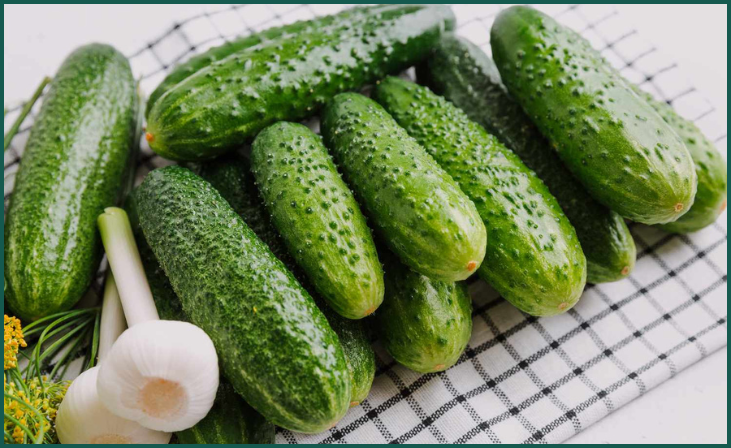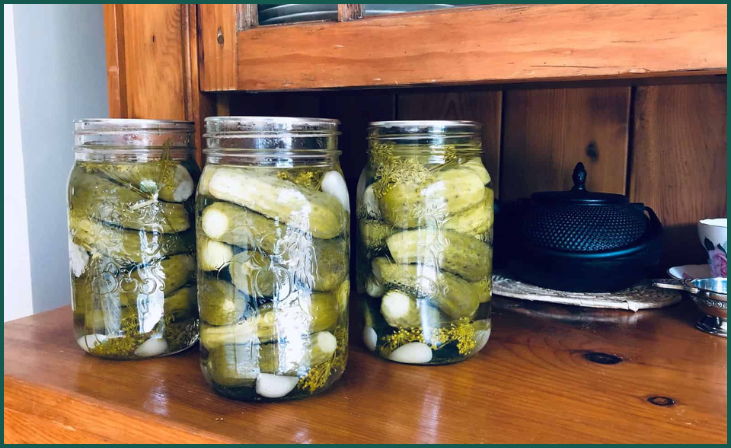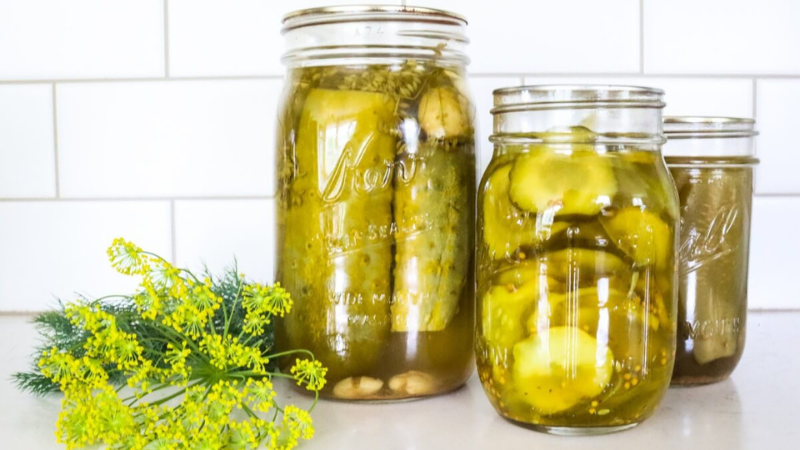Are you someone who absolutely adores pickles and is passionate about creating the crispiest, most delicious pickles right in the comfort of your own home? Well, you’re in the right place! In this all-encompassing guide, we’re about to take a deep dive into the world of pickle perfection with our “7 Expert Tips For Making Crunchy Pickles At Home.”
Whether you’re an experienced home pickler, well-versed in the art of brining and flavor infusion, or a newcomer excited to embark on your pickle-making journey, our invaluable tips are designed to be your trusted companions in the pursuit of pickle perfection.
So, get ready to roll up your sleeves, gather your ingredients, and let’s unlock the secrets to making the crunchiest, most mouthwatering pickles you’ve ever tasted.
Table of Contents
TogglePickling For Health
Pickles aren’t just a delightful addition to your meals; they also offer some surprising health benefits. While they might not replace your daily serving of fruits and vegetables, they can certainly be a nutritious and flavorful part of your diet. Here’s how pickles can contribute to your well-being:
1. Probiotic Power

Fermented pickles, such as dill pickles and kimchi, are rich in probiotics. These are beneficial bacteria that support a healthy gut. Probiotics aid in digestion, boost your immune system, and may even have a positive impact on your mood. Including fermented pickles in your diet can help maintain a balanced gut microbiome.
Also Read:- Spicy Pickled Green Beans
2. Low in Calories
Pickles are a low-calorie snack option, making them an excellent choice for those looking to manage their weight. A typical dill pickle contains only about 5-10 calories. You can enjoy the satisfying crunch of pickles without worrying about excessive calorie intake.
3. Hydration and Electrolytes

Cucumbers, the primary ingredient in most pickles, are known for their high water content. Consuming pickles can contribute to your daily hydration, especially in hot weather. Additionally, the brine in which pickles are preserved contains essential electrolytes like sodium and potassium, which help maintain proper fluid balance in your body.
4. Antioxidants and Nutrients
Pickles often contain various spices and herbs that are rich in antioxidants. For example, dill, garlic, and turmeric are commonly used in pickling and have potential health benefits. These antioxidants may help combat free radicals, which can contribute to aging and various diseases.
5. Control Over Ingredients
When you make your pickles at home, you have control over the ingredients and can choose to reduce salt or sugar if you have dietary restrictions or health concerns. This customization allows you to enjoy pickles that align with your specific health needs.
7 Expert Tips For Making Crunchy Pickles At Home
1. The Right Cucumbers Matter

The foundation of perfect pickles lies in the choice of cucumbers. When making pickles, it’s essential to select the right type – pickling cucumbers. These cucumbers are smaller and firmer than the ones you might use for salads. What sets them apart is that they have fewer seeds. This characteristic is crucial for ensuring that your pickles maintain that satisfying crunch. So, make sure to start your pickle adventure with these little gems.
Don't just scroll, subscribe!
BuzzTrail's unique web-stories are the cure for boredom you've been waiting for.
2. Mastering the Brine Solution
One of the keys to delicious pickles is a well-balanced brine solution. To create the perfect pickling liquid, you’ll need water, vinegar, salt, and sugar. The right combination of these ingredients will result in a flavorful and crisp pickle. The beauty of making pickles at home is that you can adjust the proportions to suit your taste. Some prefer a sweeter brine, while others opt for a tangier one. Experiment until you find your perfect balance.
3. Proper Sterilization

Maintaining a clean and sterile environment is crucial when making pickles. Before you begin, ensure that all your equipment and jars are thoroughly sterilized. This step prevents unwanted bacteria from interfering with the pickling process. A clean slate is essential for yielding a successful batch of pickles. So, take the time to sanitize your tools to safeguard the quality of your homemade treats.
4. Fresh Spices Make a Difference
Don’t underestimate the impact of using fresh spices when pickling. Whole spices like dill seeds, garlic cloves, and black peppercorns pack a punch of flavor that ground or powdered spices simply can’t replicate. The aromatic and savory qualities of these fresh spices infuse your pickles with a delightful taste that elevates them to a whole new level of deliciousness. So, be sure to stock up on fresh, whole spices for your pickle-making endeavors.
5. Correct Processing Time
The right processing time is a make-or-break factor when pickling. It’s vital to follow the recommended processing time diligently. Over-processing your pickles can lead to a disappointing outcome – mushy pickles. On the other hand, under-processing risks spoilage and safety concerns. Finding the perfect balance between these extremes is the key to achieving pickles with the ideal crunch. So, take the time to ensure that your pickles are processed just right.
6. The Cold Pack Method

One effective method for preserving the crispness of your pickles is the cold pack method. This technique involves adding cold brine to cold cucumbers. By starting with both ingredients at a low temperature, you maintain the firmness of the cucumbers throughout the pickling process. The cold pack method is a reliable way to ensure that your pickles turn out crunchy and delicious.
Also Read:- Best Fermented Foods
7. The Waiting Game
Once the pickling process is complete, resist the temptation to dive right into your freshly made pickles. Instead, exercise patience and allow your pickles to rest for a few weeks. During this resting period, the flavors within the jar meld and mature. This waiting game is essential for your pickles to reach their ultimate level of crunchiness and flavor. While it may require some self-discipline, the reward of the perfect pickle is well worth it.
Conclusion
Armed with these seven expert tips, you’re not just ready to make pickles; you’re poised to embark on a flavorful journey right in the heart of your own kitchen. You have the key to unlock the secrets of crafting the crispiest, most delicious pickles your taste buds have ever encountered.
Now, it’s important to remember that practice makes perfect. Don’t be disheartened if your first batch doesn’t turn out as flawlessly as you envisioned. The world of pickling is an art, and like any craft, it requires a bit of trial and error. Each attempt, whether it yields the crunchiest pickles or not, is a step forward on your journey to pickle mastery.
As you gain experience, your pickle-making skills will evolve and reach new heights. You’ll refine your technique, adjust your recipes, and develop a keen palate for the perfect balance of flavors. With each batch, you’ll come closer to achieving pickle perfection. So, embrace the process, savor the learning curve, and relish the delightful results along the way. Your kitchen is now a pickle paradise waiting to be explored!
FAQs
Q: Can I use regular cucumbers for pickling?
Q: Can I use regular cucumbers for pickling?
A: While you can, it’s best to use pickling cucumbers for a crunchier result.
Q: What’s the ideal storage temperature for pickles?
Q: What’s the ideal storage temperature for pickles?
A: Store pickles in a cool, dark place, ideally between 50-70°F (10-21°C).

